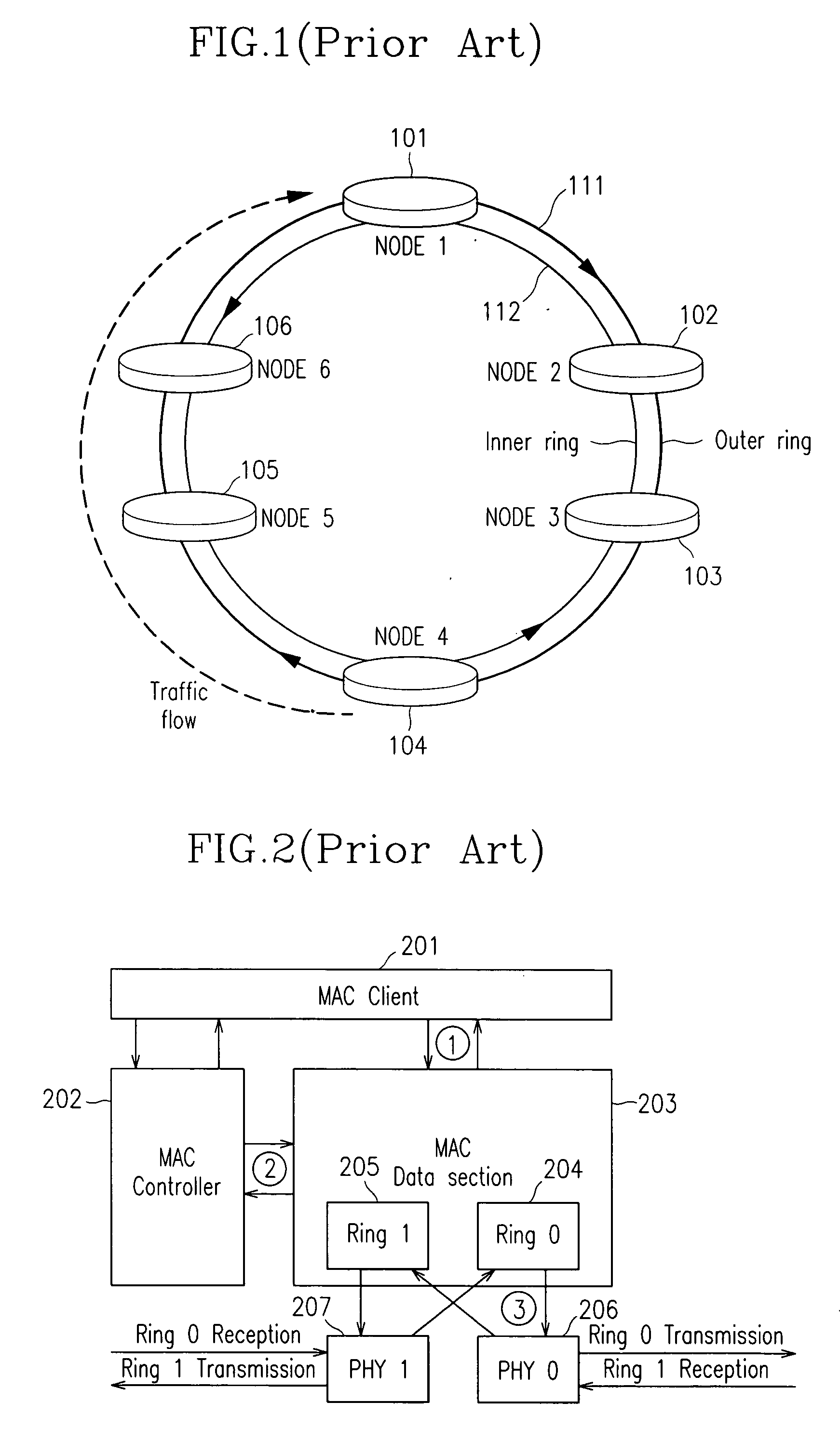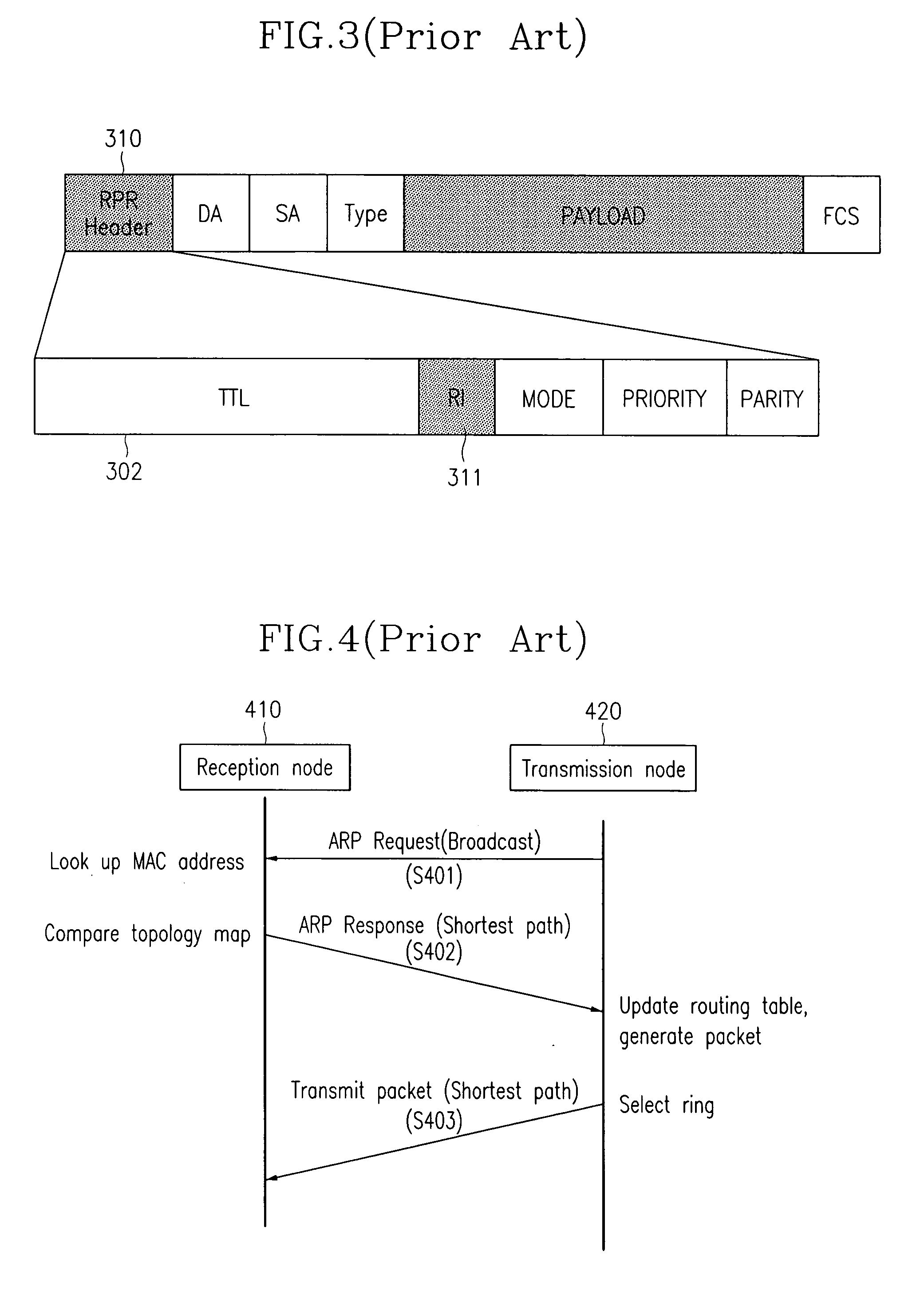Ring selection method for dual ring network
a ring selection and dual ring technology, applied in the direction of digital transmission, data switching networks, data switching by path configuration, etc., can solve the problems of deteriorating data transmission efficiency, convergence of packets on specific ring, and not making so as to achieve the best use of bandwidth and decentralize the use frequency of the ring
- Summary
- Abstract
- Description
- Claims
- Application Information
AI Technical Summary
Benefits of technology
Problems solved by technology
Method used
Image
Examples
Embodiment Construction
[0050] In the following detailed description, only the preferred embodiment of the invention has been shown and described, simply by way of illustration of the best mode contemplated by the inventor(s) of carrying out the invention. As will be realized, the invention is capable of modification in various obvious respects, all without departing from the invention. Accordingly, the drawings and description are to be regarded as illustrative in nature, and not restrictive.
[0051]FIG. 5 is a flow chart of a ring selection method for dual ring networks according to an embodiment of the present invention.
[0052] Referring to FIG. 5, every node connected to the dual ring network has a topology map through a topology packet change.
[0053] The topology map includes contents on inter-node hop numbers, port information, MAC address, and wrapped-or-not information.
[0054] Once all the nodes have the topology map, a transmission node 520 broadcasts an ARP request message to every node to get inf...
PUM
 Login to View More
Login to View More Abstract
Description
Claims
Application Information
 Login to View More
Login to View More - R&D
- Intellectual Property
- Life Sciences
- Materials
- Tech Scout
- Unparalleled Data Quality
- Higher Quality Content
- 60% Fewer Hallucinations
Browse by: Latest US Patents, China's latest patents, Technical Efficacy Thesaurus, Application Domain, Technology Topic, Popular Technical Reports.
© 2025 PatSnap. All rights reserved.Legal|Privacy policy|Modern Slavery Act Transparency Statement|Sitemap|About US| Contact US: help@patsnap.com


